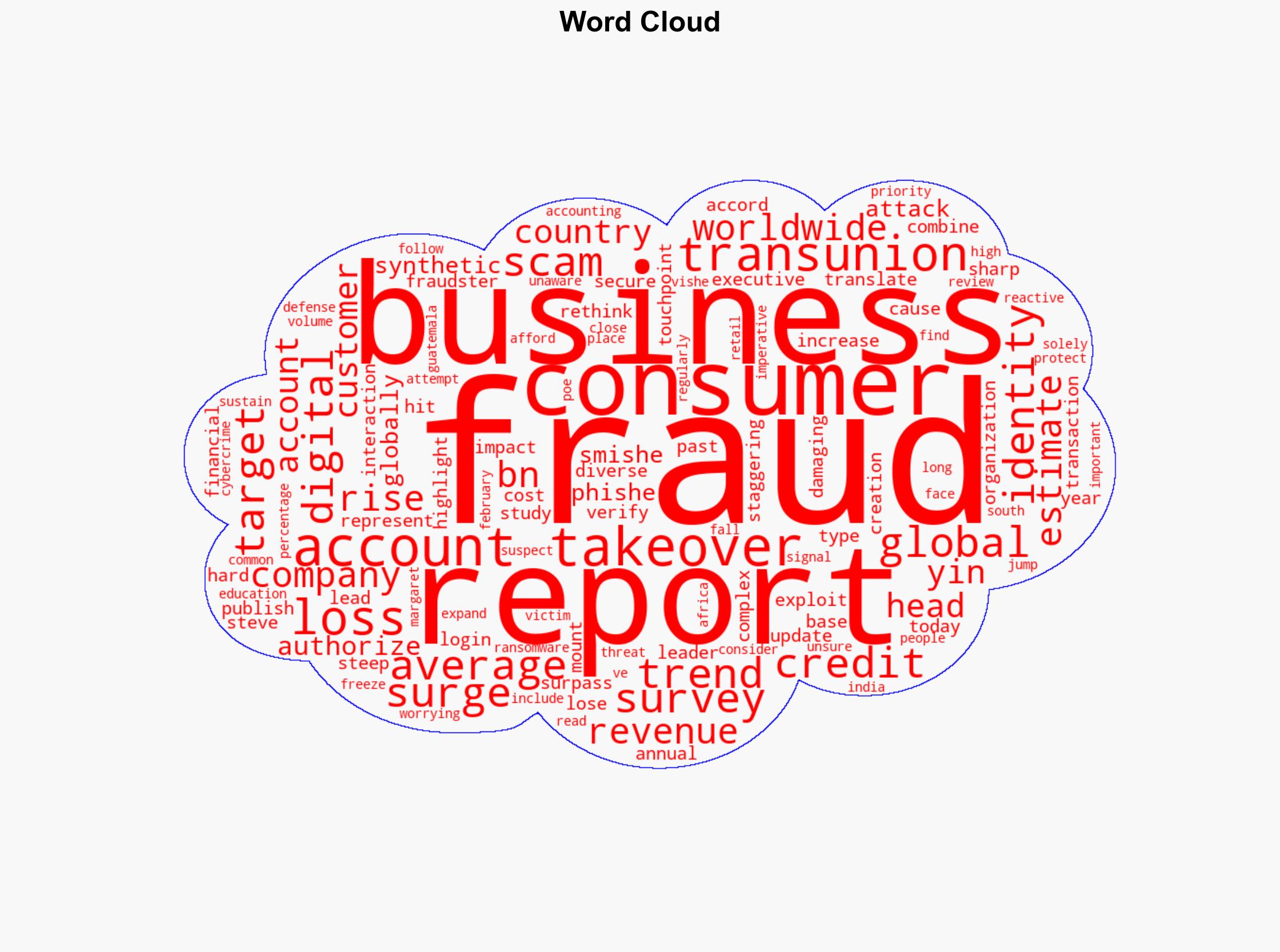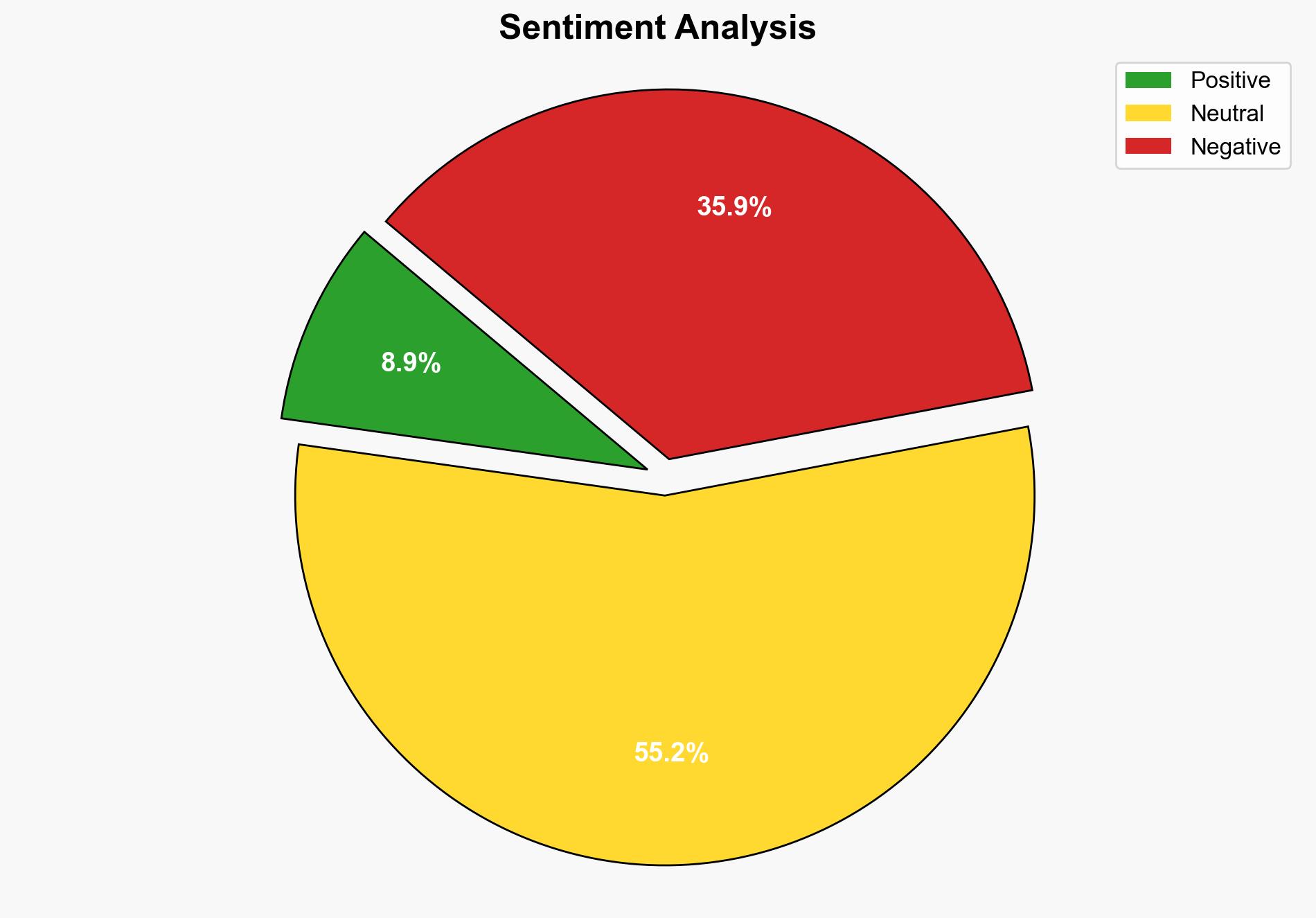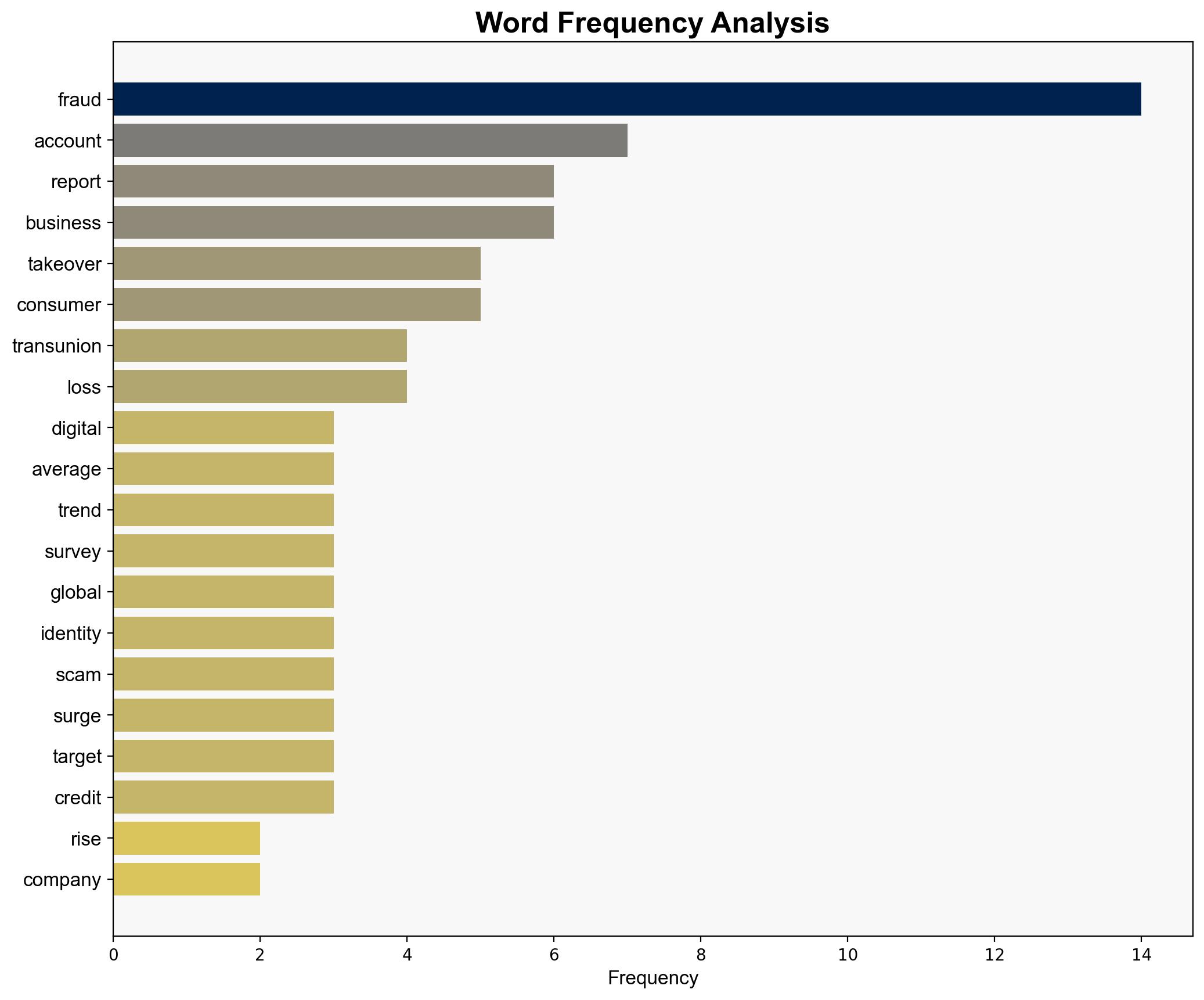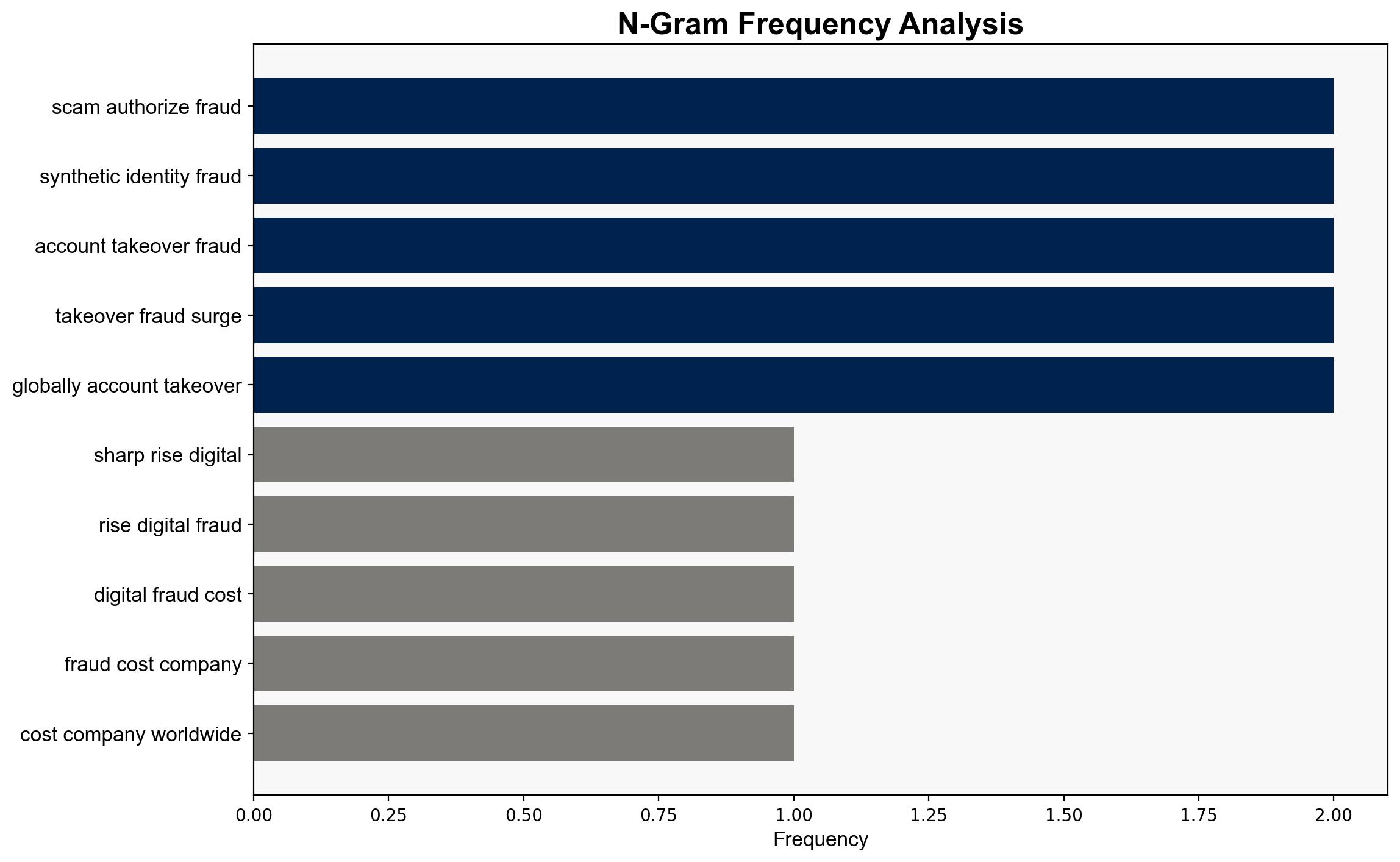Digital Fraud Costs Companies Worldwide 77 of Annual Revenue – Infosecurity Magazine
Published on: 2025-10-08
Intelligence Report: Digital Fraud Costs Companies Worldwide 77% of Annual Revenue – Infosecurity Magazine
1. BLUF (Bottom Line Up Front)
Digital fraud is significantly impacting global businesses, with an estimated loss of $5.2 billion annually. The hypothesis that digital fraud is primarily driven by sophisticated account takeover techniques is better supported. Confidence level: Moderate. Recommended action: Enhance identity verification processes and consumer education to mitigate fraud risks.
2. Competing Hypotheses
1. **Hypothesis A**: The primary driver of digital fraud losses is the increase in account takeover fraud, facilitated by advanced cybercriminal tactics.
2. **Hypothesis B**: The rise in digital fraud losses is predominantly due to a combination of scam, authorized fraud, and synthetic identity fraud, rather than account takeover alone.
Using ACH 2.0, Hypothesis A is more supported due to the reported surge in account takeover incidents and their significant financial impact. The structured analysis indicates that while other fraud types contribute, account takeovers are currently the most damaging.
3. Key Assumptions and Red Flags
– **Assumptions**: It is assumed that the data from TransUnion accurately reflects global trends and that businesses are reporting fraud losses consistently.
– **Red Flags**: Potential underreporting of fraud due to reputational concerns; lack of data granularity regarding regional variations in fraud types.
– **Blind Spots**: Limited insight into emerging fraud techniques and their potential future impact.
4. Implications and Strategic Risks
The increase in digital fraud poses significant economic risks, potentially leading to higher costs for businesses and consumers. Cybersecurity measures may become more stringent, affecting user experience. Geopolitically, countries with weaker cybersecurity frameworks may become hotspots for fraud operations. The psychological impact on consumers could lead to decreased trust in digital transactions.
5. Recommendations and Outlook
- Enhance multi-factor authentication and real-time monitoring to detect and prevent account takeovers.
- Invest in consumer education initiatives to raise awareness about common fraud tactics.
- Scenario Projections:
- Best Case: Implementation of advanced security measures leads to a significant reduction in fraud incidents.
- Worst Case: Continued rise in fraud leads to increased financial losses and consumer distrust.
- Most Likely: Gradual improvement in fraud detection and prevention, with ongoing challenges from evolving tactics.
6. Key Individuals and Entities
Steve Yin, Margaret Poe
7. Thematic Tags
national security threats, cybersecurity, counter-terrorism, regional focus





